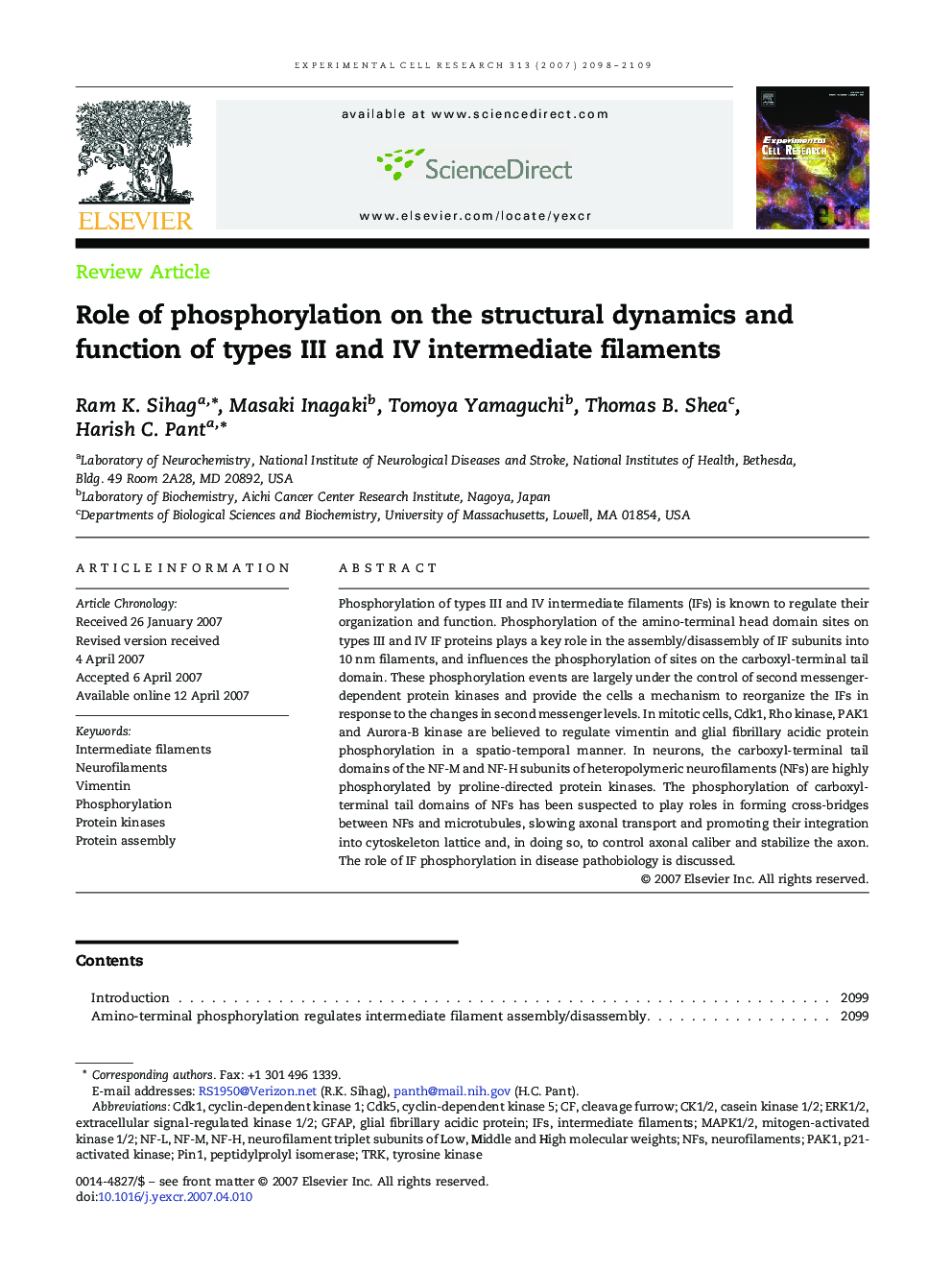| کد مقاله | کد نشریه | سال انتشار | مقاله انگلیسی | نسخه تمام متن |
|---|---|---|---|---|
| 2133070 | 1086736 | 2007 | 12 صفحه PDF | دانلود رایگان |

Phosphorylation of types III and IV intermediate filaments (IFs) is known to regulate their organization and function. Phosphorylation of the amino-terminal head domain sites on types III and IV IF proteins plays a key role in the assembly/disassembly of IF subunits into 10 nm filaments, and influences the phosphorylation of sites on the carboxyl-terminal tail domain. These phosphorylation events are largely under the control of second messenger-dependent protein kinases and provide the cells a mechanism to reorganize the IFs in response to the changes in second messenger levels. In mitotic cells, Cdk1, Rho kinase, PAK1 and Aurora-B kinase are believed to regulate vimentin and glial fibrillary acidic protein phosphorylation in a spatio-temporal manner. In neurons, the carboxyl-terminal tail domains of the NF-M and NF-H subunits of heteropolymeric neurofilaments (NFs) are highly phosphorylated by proline-directed protein kinases. The phosphorylation of carboxyl-terminal tail domains of NFs has been suspected to play roles in forming cross-bridges between NFs and microtubules, slowing axonal transport and promoting their integration into cytoskeleton lattice and, in doing so, to control axonal caliber and stabilize the axon. The role of IF phosphorylation in disease pathobiology is discussed.
Journal: Experimental Cell Research - Volume 313, Issue 10, 10 June 2007, Pages 2098–2109